Photographic Techniques of Josef Šechtl
Second exhibition of Šechtl & Voseček Museum of Photography.
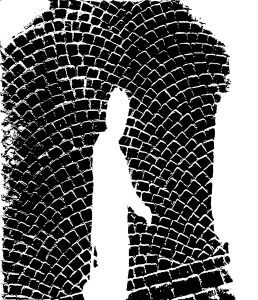
- Timeline
- Work of Josef Šechtl
- Photographic techniques
Small example of the matherial from the exposition can be seen in the virtual gallery.
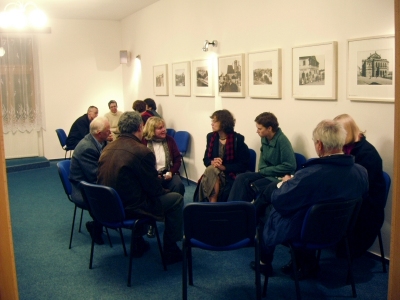
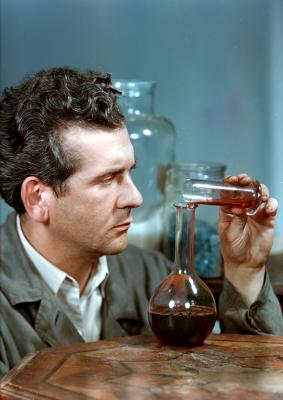
Timeline
- 04-26 1925
- Josef Ferdidand Ignác (pupa) was born in Prague. His parents were Anna and Josef Jindřich Šechtl.
- 11-01 1926
- Anna Šechtlová (mother) died.
- 05-12 1927 (2 years)
- Father (Josef Jindřich) got married with Božena Bulínová.
- 01-16 1936 (10 years)
- Jan Voseček, co-owner of Šechtl and Voseček studioes and de-facto member of familly, died in Tábor.
- 1836-1944 (11-19 years)
- Josef Šechtl studied on Gymnasium in Tábor. This is where he met his future wifes Marie Kokešová.
- 1944 (19 years)
- Forced to work for TN (Technische Nothilfe) to help repair Ruzyně airport damaged by the war.
- 1945 (20 years)
- Final exam on Gymnasium in Táboře.
- 1947 (22 years)
- Master exam in photography.
- 05-15 1948 (23 years)
- Got maried with Marie Kokešová (Marie Šechtlová) v Táboře.
- 1950
- Marie Šechtlová finished studies in photography (obor fotografie).
- 1951 (26 years)
- Seriously harmed during motor-cycle crash.
- 03-17 1952 (26 years)
- Daugther (Marie Michaela) was born.
- 1953 (28 years)
- Communistic goverment turned familly studios "Šechtl a Voseček" into a co-operative. Josef Šechtl remained as chief worked of the branch.
- 02-24 1954 (28 years)
- Josef Jindřich (father) died.
- Dec 1957 (30 years)
- Josef Šechtl was arrested, his chief position was canceled. Wast majority of familly photographic archive was confiscated.
- Dec 1958 (31 years)
- Liberated from the jail.
- 12-14 1961
- Marie Šechtlová leaved co-operative and become candidate (and later member) of "Svaz čsl. výtvarných umělců" (federation of czechoslovakia graphic artists), an organization allowing (controlled) publication of artistic photography in the communistic regime.
- 2. září 1965 (40 years)
- Josef Šechtl became candidate (and later member) of "Svaz čsl. výtvarných umělců".
- 1967
- Marie Šechtlová was seriously harmed by X-ray because of mistake of the doctor.
- 7-10 1992 (67 years)
- Josef Šechtl speak to radio about value of work of Šechtl family for Czech photography and city Tábor.
- 8-10 1992 (67 years)
- Josef Šechtl died in Tábor.
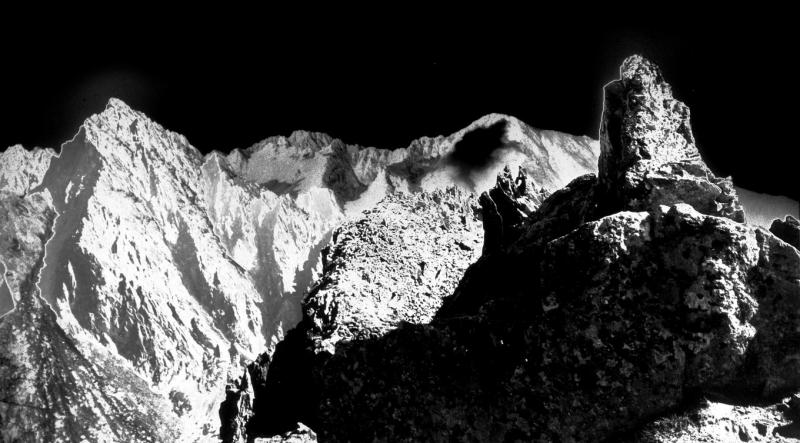
Work of Josef Šechtl
- 1957
- First color photo was published in the monthly "čsl. Fotografie".
- 1957
- 2nd place in category "movie poetry" for the movie "Měsíček" (Little moon) in national competetion of amateur movie in Uherské Hradiště, Movies "Vitamíny" (Vitamines) and "Měsiček" (Little moon) presented sucesfully in the competation of popular creativity of ROH.
- 1958
- Movie "Měsíček" (Little moon) was presented on international festival UNICA 1958 in Emz.
- 50's and early 60's
- Josef Šechtl was not allowed to publish (in communistic regime) because his father was tradesman.
- 1965
- For the first time the cooperate authorship of Marie and Josefa Šechtl was mentioned first time for catalogue AJG.
- 1967
- First cooperative exposition of Marie and Josef Šechtl.
- 30 black and white and 20 color photographs on display in several cities across Czechoslovakia.
- 1967
- Catalogue of Marie and Josef Šechtl with photographs "South Bohemian Ghotic" for AJG.
- 1970
- Published several postcards and collections (including Low and High Tatras), Pressfoto Bratislava and Orbis.
- 1971
- Cooperation on propagation prints. (Vodní Stavby, Adamovské Strojirny, Interér Praha, Teps, Jablonex)
- 1972
- Publication "Praha", Pressfoto Praha. Realised large scale photographic print for exposition of sculptor Karel Mrázek.
- 1973
- Photographic wall "Tvůrce a dílo" (Creator and his work) for dolmitary of school of ceramics in Bechyně. Exposition in Pelhřimov, exposition "Manželé s kamerou" (Interkamera Praha) exposition "Tvář našeho kraje" (Face of our region) as part of festival "Země živitelka" in České budějovice.
- 1973
- Illustration for the book F. Kožíka "Bretaň, dcera oceánů" (Bretagne, daughter of oceans).
- 1974
- Publication J. Kutan "Jižní Čechy" (South Bohemia).
- 1975
- Set of photographs "Země živitelka" (33 color photographs).
- 1976
- Participation on exposition of south bohemian artists "Užité umění" in Brno. Publication "Hradec Králové".
- 1977
- Callendar "Květiny" (Flowers), Pressfoto Bratislava, "Za krásami Jižních Čech" (For the beauty of south bohemia), OT Kolín. Participation on exposition "Soudobá výtvarná fotografie" (Current graphic photography) in Praha.
- 1978
- Callendar "Horská květena" (High mountain flowers), Pressfoto Bratislava. Callendar "Hudba - plamen života" (Music source of life), Pressfoto Praha. Publication "Svět loutek" (World of pupils), kruh, Hradec Králové.
- 1979
- Exposition of photographs in Tábor Publication "Dítě a svět" (Child and World), Pressfoto Praha. Publication P. Korčák "Tábor, národní kulturní památka" (Tábor, national monument), Panorama. Callendary "Lidické růže" (Roses from Lidice).
- 1980
- Exposition "Táborské proměny, fotografie z archivu tří generací" (Tábor developments, photographs of three generations). Exposition in culture house of České Budějovice. Publikace for 30rd anniverasry of Jitex Písek.
- 1981
- Callendary "Život v míru" (Live in peace). Publication "Jihočeská klenotnice" (South bohemian jewelery).
- 1982
- Exposition of color photography in regional museum Písek. Large scale photographic prints for hotel Gomel, České Budějovice.
- 1983
- Callendaries "Cirkus" (Circus) and "Loutky" (Pupets), Pressfoto Bratislava, "Fotografie" (Photographs), OT Kolín.
- 1984
- Publication F. Šmejkal "Zdeněk Sklenář", Odeon.
- 1985
- Set of posters, merkur, poster for Prague spring.
- 1986
- Posters with South Bohemia, Pressfoto Bratislava. Publication M. Krajný "Karel Stehlík", Odeon.
- 1987
- Exposition "Color photography", galerie Dačice. Photographic wall "hudba lesa" (music of forest) in Sezimovo Ústí. Color large scale photographs for hotel Palcát, Tábor. Reportages for magazine "La vie Thecoslovaque".
- 1989
- Publication P. Schefuler "Jižní Čechy objektivem tří generací" (South Bohemia photographed by three generations).
- 1989
- Exposition for 150th anniversary of photography, Praha.
Color photography (1936)
Various ways to create color photography was explored since 19th century. First color photograph was created in 1861 by physician James Maxwell. First color matherial Autochrome (patented by brother Lumieres 1907) was used by father of Josef Šechtl in 1909. However it is commonly considered that color photography was intorduced in 1936 when Kodachrome negatives became available. Unlike its predecestors, Kodachrome was the first matherial allowing to make and reproduce photography in acceptable price.
In the Czechoslovakia the beggining of color photography was dificult because of communistic regime and lack of good matherial. In the early 50's Agfacolor was imported and later it was replaced by domestic matherial Foma. Making a shot was very dificult this time since each photo had colors shifted in various direction and one was required to make several experiments and ballance it by color filters. This process too several days for each photograph.
Josef Šechtl experimented with color photography since it's infancy in Czechoslovakia in early 50's. He didn't have profesional quality laboratory for color photography so he heated it to high temperatures and the tests was brought to day light in the front of house. Even with this equipment Josef created multiple prints, but unforutnately many of them looks too red today as the matherial didn't last. Later he switched to diapositives Agfa and high quality paper Cibachrome and prints made this system last till present day and still surprise by beautifull colors.
Sabattier effect (1862)
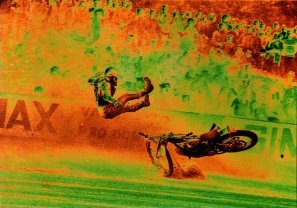
Sabattier effect can be reproduced by exposing the photograph still placed in the developer to the light for a short time. At this moment the partly developed image covers the still sensitive parts of paper so areas already developed are exposed less than parts not developed yet and the resulting photo combine positive and negative image.
Today the effect can be simulated by image editing programs in computer by setting the curves like this:
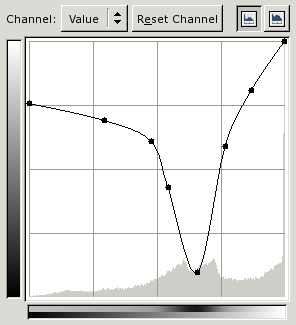
Josef Šechtl used different color filters for the initial exposition and the light, he also exposed negative matherial from positive or exposing the image to different lights making the positive image in photograph invisible.
Agfacontour (1971)
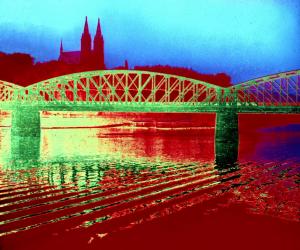
Agfacontour is unique matherial allowing to color the black and white photograph in a way so little differences of gray levels are well visible. THis matherial was developed by Agfa in 1971 for scientific purposes 9for instance for infra-red photos from Apollo missions). Josef Šechtl was one of the very few photographes (especially in the former communistic countries), who used it for artsy purposes.
The Agfacontour film had both positive and negative emulsion allowing to separate selected area of grayscale.
Original photograph
Contrast photo
Contrast negative
Combination of the both into contour
Final separations was put together by exposing the contours trought color filters. One can create similar effect by Sabattier effect, however the agfacontour is much easier to controll and it allows wider range of colours to be present. Josef Šechtl was invited to conference in west Germany concerning the matherial but he was not allowed to leave the country, so he used the process in complette isolation resulting in different results than common use of the matherial.
Pseudorelief (Bas-reliéf)
Pseudorelief is result of combining positive and negative picture with little offset. Final picture is almost gray, but in the contours of dark and light areas create relief like effect.
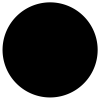 |
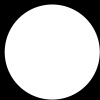 |
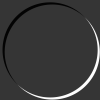 |
| Original shot | Offsetted negative | Pseudoreliéf creating by combining both |